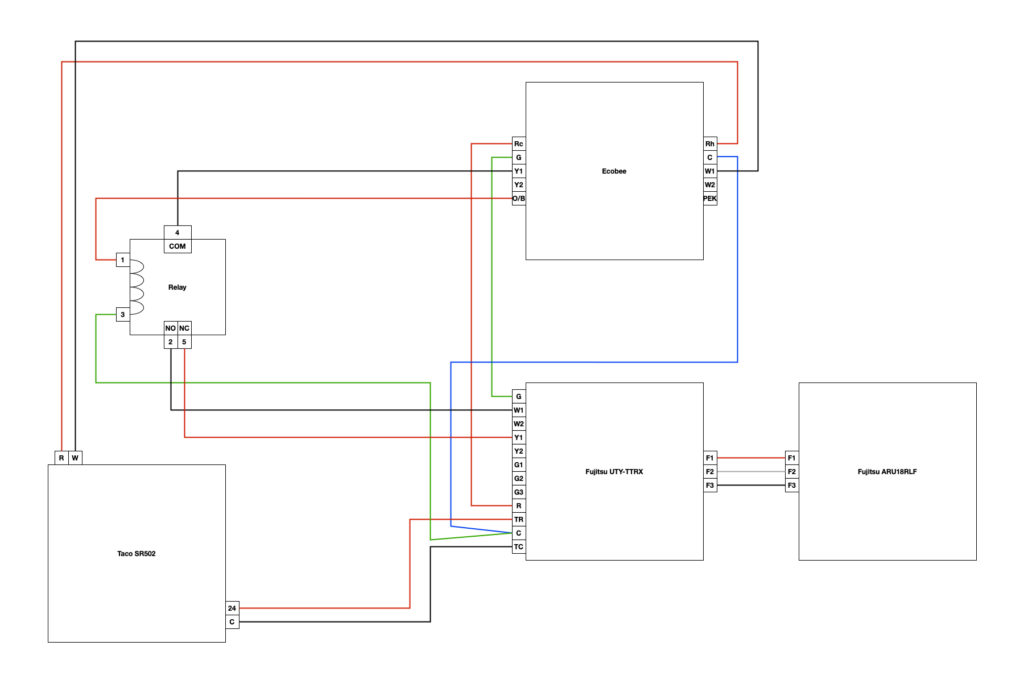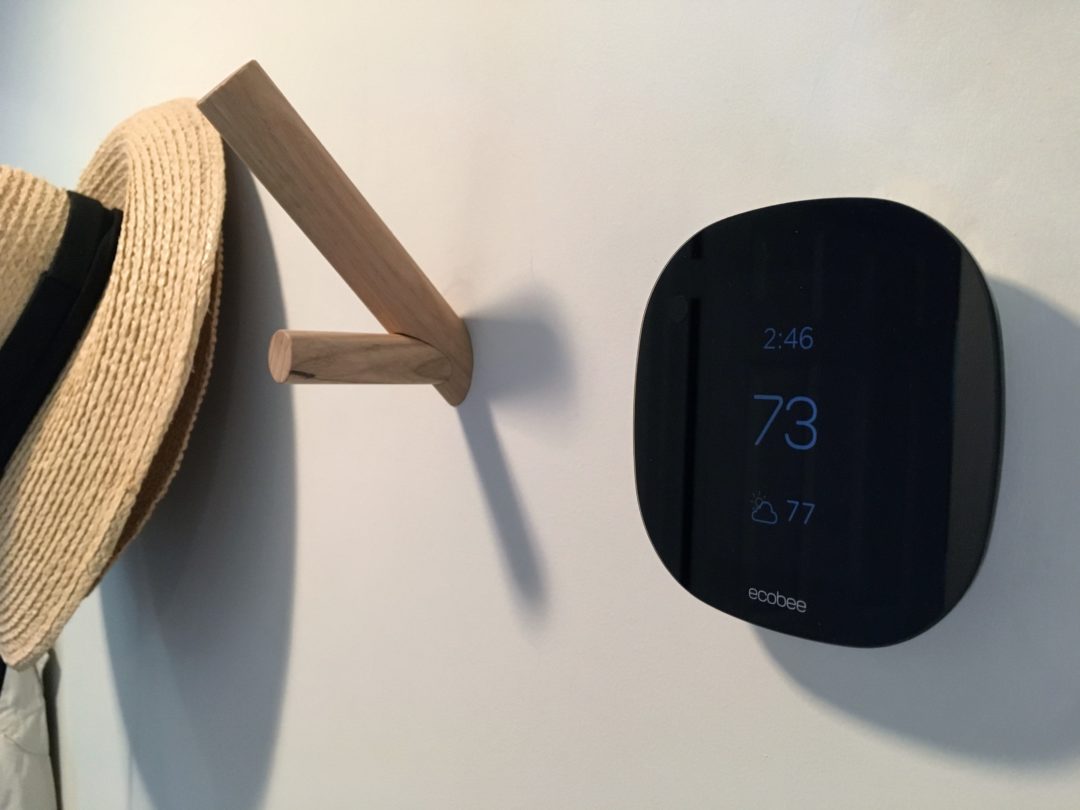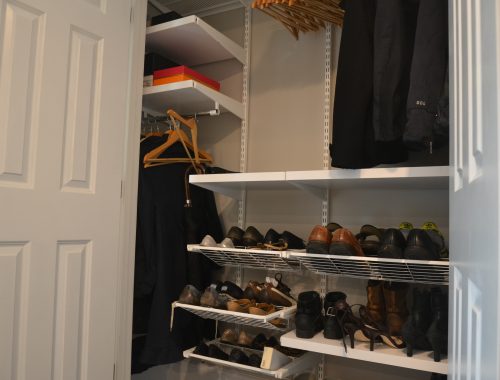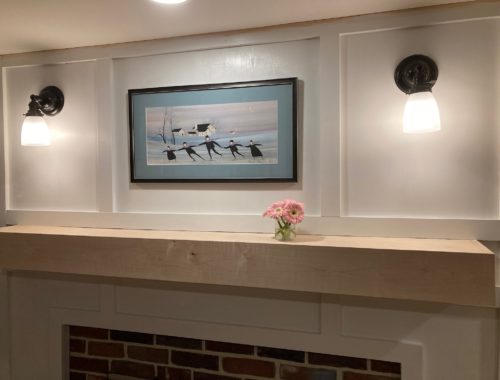In my most nasal Seinfeld impression, I have to ask: “what’s the deal with mini split thermostats?”
Before the birth of our son, we decided that our 1948 house needed air conditioning. And by air conditioning, we wanted something a bit more powerful than the single 5,000 BTU window unit permanently installed in the wall of our living room. We looked at everything from geothermal (bye-bye wallet) to small duct high velocity systems (hello whoosh!). In the end, we opted for a multi zone mini-split system. The install placed one air handler in the basement and one in the attic. Not only did this allow us to save living space by skipping the ductwork to connect the two floors, it also saved us a ton of cash versus what a geothermal system would have cost. However, had we done it all again, we probably would have gone that route. More on that later.
The Problem
Fast forward to the summer after our son was born. Mini-split systems, as any HVAC installer will tell you, are meant to be “set it and forget it.” You set the temperature you want and let the system do the rest. The problem is that I can no longer trust our Fujitsu to do the rest. The model we ended up with is part of the Fujitsu Halcyon line, a residential line of heat pumps with a thermostat that thinks it knows better than you. Had we been not very particular people, we would have believed that. However, it became obnoxiously clear that something needed to be done when four separate thermometers confirmed our suspicion: the mini-splits were not sticking to their set temperatures. Even with eco mode disabled, temps would swing upwards of 8 degrees from whatever the displays read.
The other problem was our heating situation. For a modest fee, we decided to upgrade to Fujitsu’s “extreme low temperature heating” system as we live in New England. This would allow the new system to heat even in sub-zero temperature. As you may know from our earlier boiler update, however, our home is already heated radiantly. We would need to keep our radiator thermostat separate from the Fujitsu, something our installer insisted on.
The Thermostat
After months of research, I knew what had to be done. A new thermostat, one attuned more to comfort than efficiency. Two to be more precise: one for upstairs and one for down. These stats would need to sync somehow. Our Fujitsu system is made up of a single outdoor unit and two indoor units. That means that it can only ever be in one mode (heat or cool) at a time. Calling one mode while the other is active is unsupported and could even damage the system, such as encouraging mold growth if switching occurs too frequently.
Ideally, the downstairs stat would also be able to control our boiler, a feature known as “dual fuel”. Most of the year, the mini-splits would heat our home. When the outdoor temp drops below a certain set point, the boiler would kick in. At lower temps, the mini-split would need to rely on electric resistive heat. The natural gas boiler would be more efficient and cost less to run when that happens.
So, how many thermostats support interconnection as well as dual fuel setups? Very few. At the end of the day, we went with two Ecobee 3 Lite thermostats. The problem now was how we were going to connect standard thermostat wiring to Fujitsu’s propriety three-wire setup.
The Adapter
Fortunately, Fujitsu manufacturers the exact device we need! Affectionately known as the UTY-TTRX, this little adapter allows most Halcyon units to be controlled by a third-party thermostat. All done, right? This wouldn’t be 95 Birds if the story ended here. The adapter accepts wiring for either a one-stage or two-stage conventional setup. Unfortunately, we have a heat pump and the Ecobee (like any thermostat) can only be wired for dual fuel when one of the connected sources is a heat pump.
Enter the fan relay adapter. Heat pumps utilize one wire to turn on the compressor (typically Y, or yellow) and another to switch between heating and cooling (known as O/B, or orange/blue). Conventional systems use separate wires for heat and cool. By adding a relay between the Ecobee and the UTY-TTRX, we can simulate the O/B wire allowing the thermostat to think it’s controlling a heat pump. When the thermostat calls for heat, the O/B wire will cause the relay to open. When it calls for cooling, the O/B wire will cause the relay to close. Having not found this idea mentioned anywhere before, I do think it’s a pretty clever solution, if I do say so myself. Have a look at the wiring diagram I used to design the system to get a better idea what I’m talking about.

Before all was said and done, there was one last decision to be made. This adapter does not simply relay temperature settings from the Ecobee to the Fujitsu. Instead, the adapter has now become the primary controller for the mini-split. When the Ecobee calls for heating (or cooling), the adapter takes that call and determines what temperature the mini-split should aim for using temp sensors inside the air handlers themselves. I opted for the most efficient choices: higher cooling temps and lower heating temps. These were almost exactly (or close to) the temperatures I would set the Ecobees to.
The Settings
Once everything was hooked up, it was time to start tinkering. To solve for the first part of our problem, we utilized an extremely convenient feature of the Ecobee ecosystem: external sensors. By placing sensors around our home, we could achieve much more reasonable temperatures in the areas more important to us, such as bedrooms. On top of this, unlike the original Fujitsu thermostat, the Ecobee works like any old stat and aims for the temperature we set.
For the second part of our disagreement with the stock stats, the ability to control two heating sources, we would first need to calculate the point at which it made financial sense to switch from using the heat pump (the default heating source) to the boiler (the new “auxiliary” heating source). The best way to accomplish this is to compare the cost of running the mini-split to the cost of running the boiler at different temperatures. At some point, the mini-split will be more efficient and cheaper to run. That’s a very simplified version of it, but I found this StackExchange conversation helpful. For our system, it made sense to set the balance point at 40 degrees Fahrenheit. Above that, the mini-split runs. Below, the boiler runs.
To round everything out, I fine tuned the Ecobee stats to focus more on long running cycles, the maximum delay between cycles, and little to no temperature setbacks. These are all optimizations specific to heat pumps and radiators which are meant to be run for long periods of time to achieve a consistent temperature.
Conclusion
Phew, that was longer than expected. I didn’t even cover the half dozen or so spreadsheets I built throughout to derive the most optimal settings. The real question: does it work? Heck yeah. Ecobee thermostats are so much more accurate at achieving the temps we desire and are worlds above the Fujitsu controllers in terms of usability. Not to mention that I can control things from my phone.
Would we do it the same way if we had to choose all over again? Probably not. After hearing about the experiences neighbors and friends shared regarding their geothermal installs, we really regret not going that route. Sure, we would have lost a closet to make room for a duct between the first and second floors, but we probably could have done away with our boiler entirely. Its a nice boiler and the radiators are certainly accurate for our home, but I could do without the environmental harm. And, on top of our solar system cutting out our electric bill, I wouldn’t mind losing the gas bill, too.





No Comments